Description
Pyrite has a hardness of 6 – 6½ and a specific gravity of 4.8 – 5, and Fluorite is 4 and 3.175 – 3.56, respectively. Pyrite has been called Pyrite for possibly more than 2,000 years, named in antiquity from the Greek “pyr” for “fire”, because sparks would fly when struck with another mineral or metal. Meanwhile, Fluorite was much more recently named in 1797 by Carlo Antonio Galeani Napione from the Latin, fluere, for “to flow” (for its use as a flux). Also from the Mindat page for Fluorite, “the term fluorescence is derived from fluorite, which will often markedly exhibit this effect. The element fluorine also derives its name from fluorite, a major source of the element.”
Both Pyrite and Fluorite are found all over the world in thousands of locations. According to Mindat, “Pyrite is a very common mineral (also one of the most common natural sulfides, and the most common disulfide), found in a wide variety of geological formations from sedimentary deposits to hydrothermal veins and as a constituent of metamorphic rocks. The brassy-yellow metallic colour of pyrite has in many cases lead to people mistaking it for Gold, hence the common nickname ‘Fool’s gold’. Pyrite is quite easy to distinguish from gold: pyrite is much lighter, but harder than gold and cannot be scratched with a fingernail or pocket knife…” Whereas Fluorite is, “a common gangue mineral in hydrothermal veins, especially those containing lead and zinc minerals. It is also found in some greisens, granites, pegmatites and high-temperature veins, and as a component of some marbles and other metamorphic rocks.”
Cripple Creek has also produced some purple Creedite, and purple Tellurite (https://youtu.be/PL1SynPa36M and https://youtu.be/QkALakEels0), and it’s not known for sure whether this may also have any bit of Creedite or Tellurite, or if this Fluorite is at all fluorescent, but what’s most intriguing is that as it’s polished, either Jerry just wanted to polish it, or possibly, this rock may have been unearthed in a Gold mine, and they polished it to check for a possibility of Gold, or Calaverite, perhaps? After all, it does look somewhat similar in spots to https://youtu.be/JSXpM6uA3z8
It’s definitely not known for sure and no claims are being made, and if they polished it to check for gold, it’s quite possible it wasn’t found when they did so as it then wasn’t called Calaverite or Sylvanite, but it wouldn’t at all be surprising if there was a bit of Gold in this rock as well!
Regardless, the obvious Pyrite and Fluorite both make this specimen quite special!
Only some other rocks that were once in Jerry’s collection could be found when Googling Jerry, so not very much more is known about him, but the other rocks in his collection, and this one, are all quite cool, so he must’ve also been one cool guy!
Be sure to keep your eye out for a cool purple and gold-colored rock if you happen to be hiking near Cripple Creek, or anywhere else that you might be able to find a cool right like this!

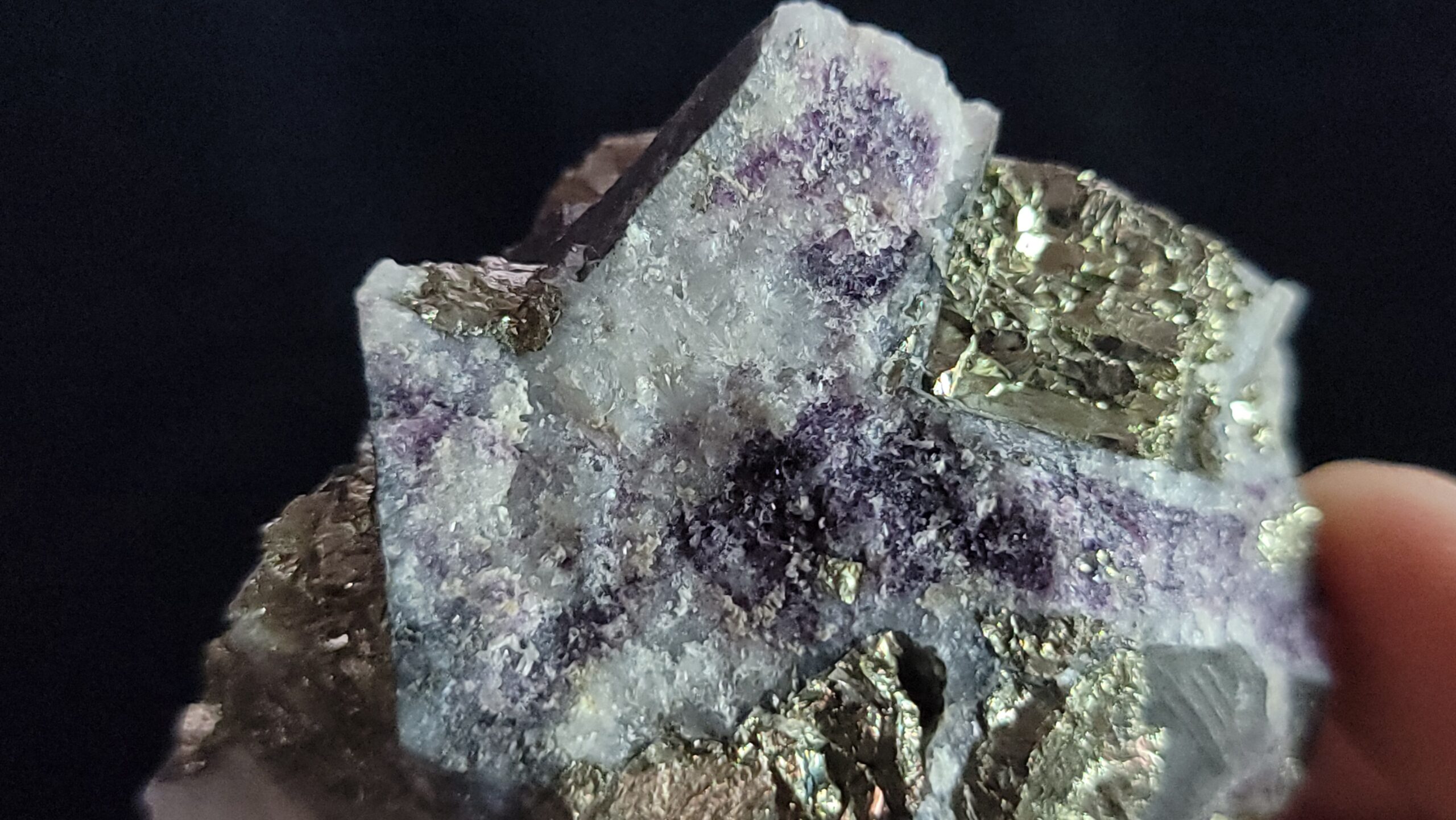
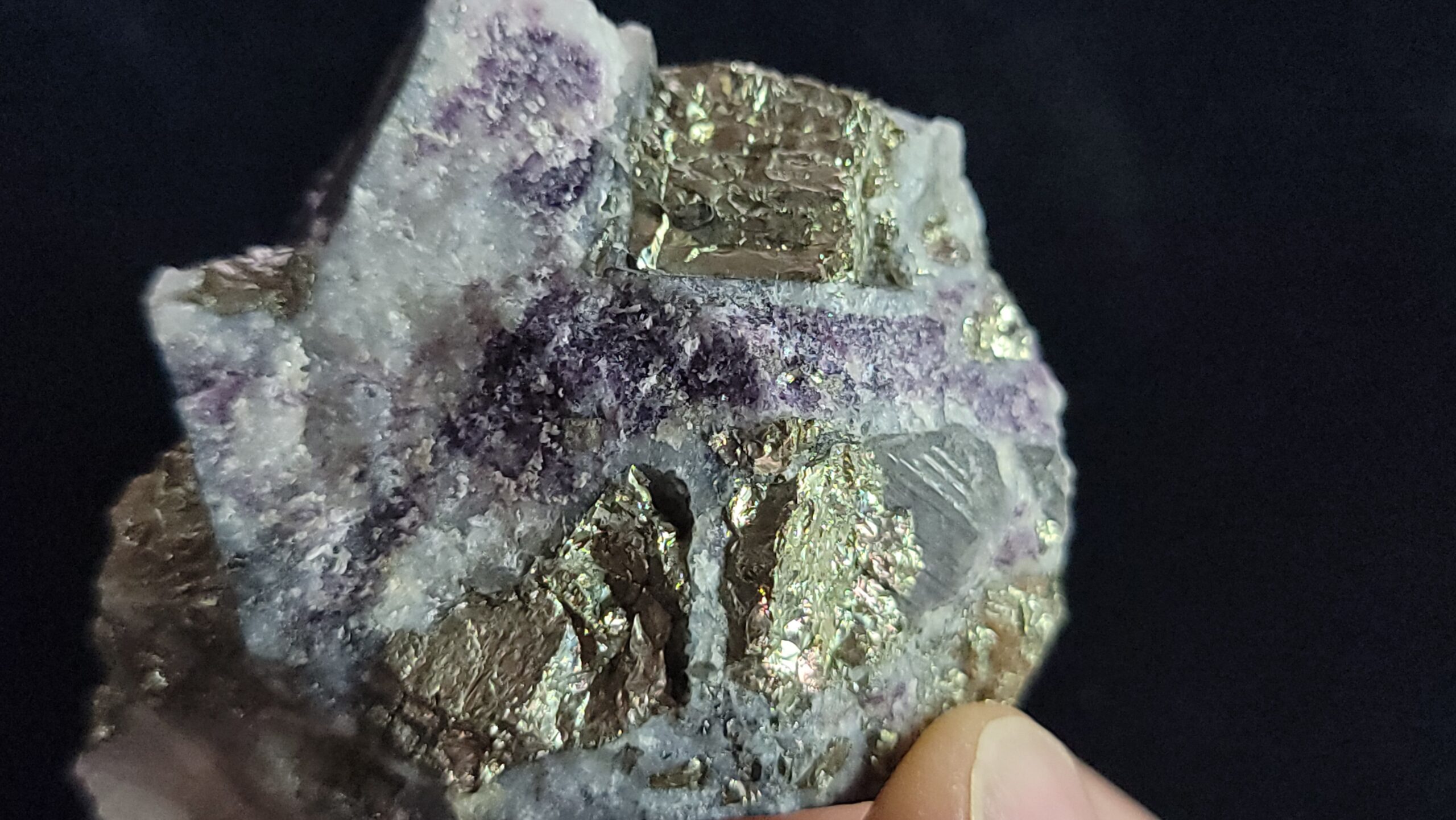
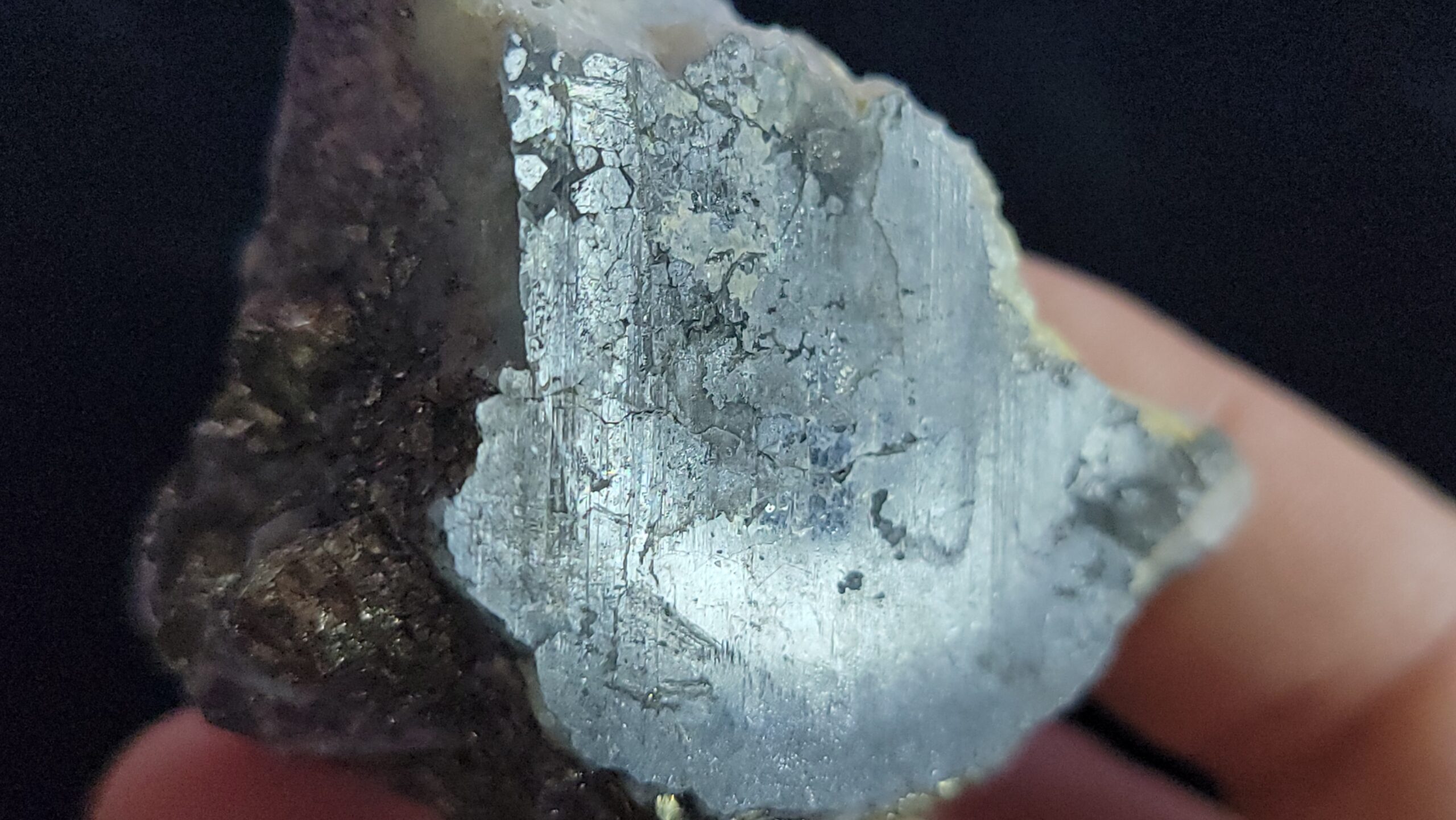

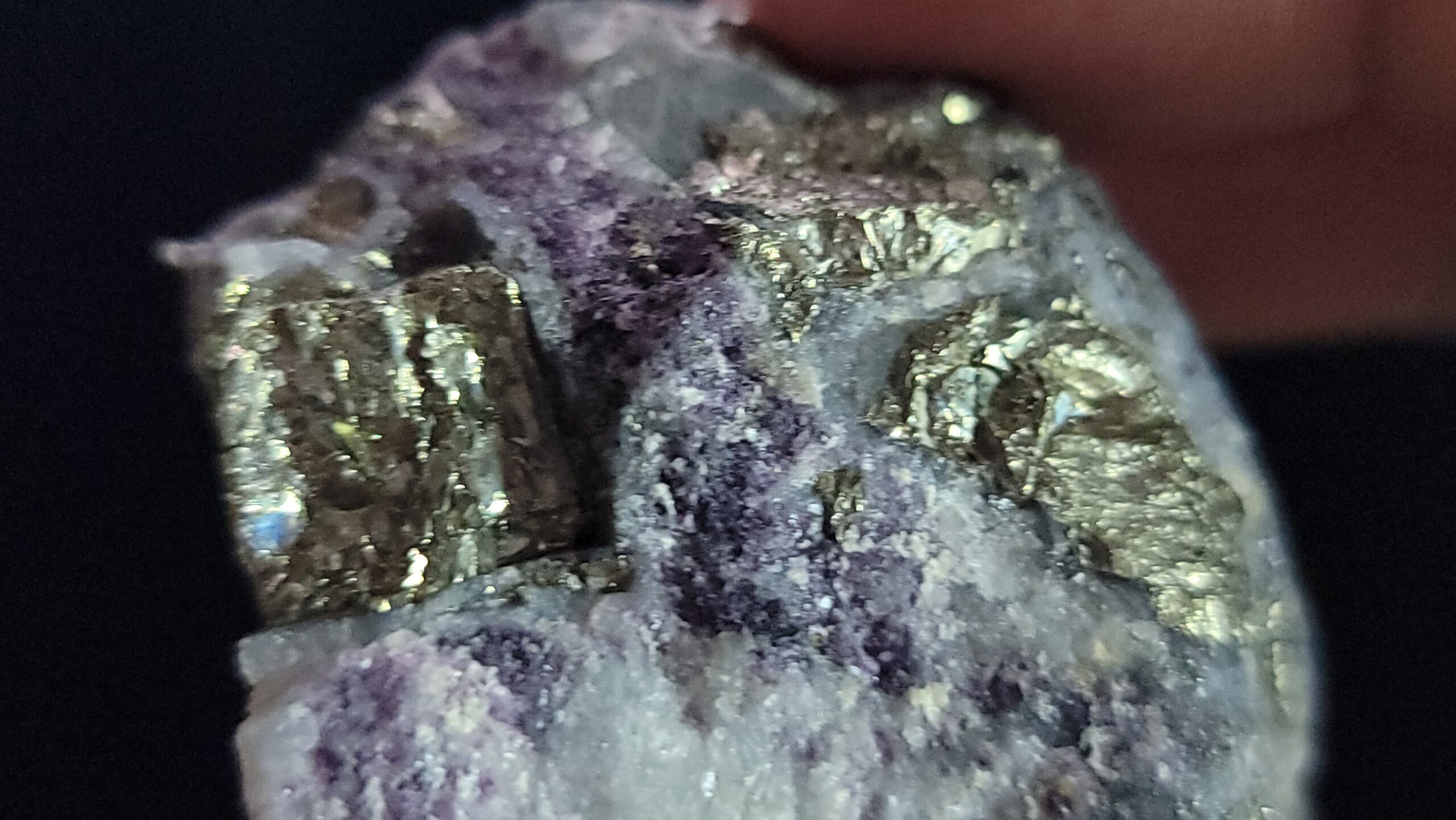
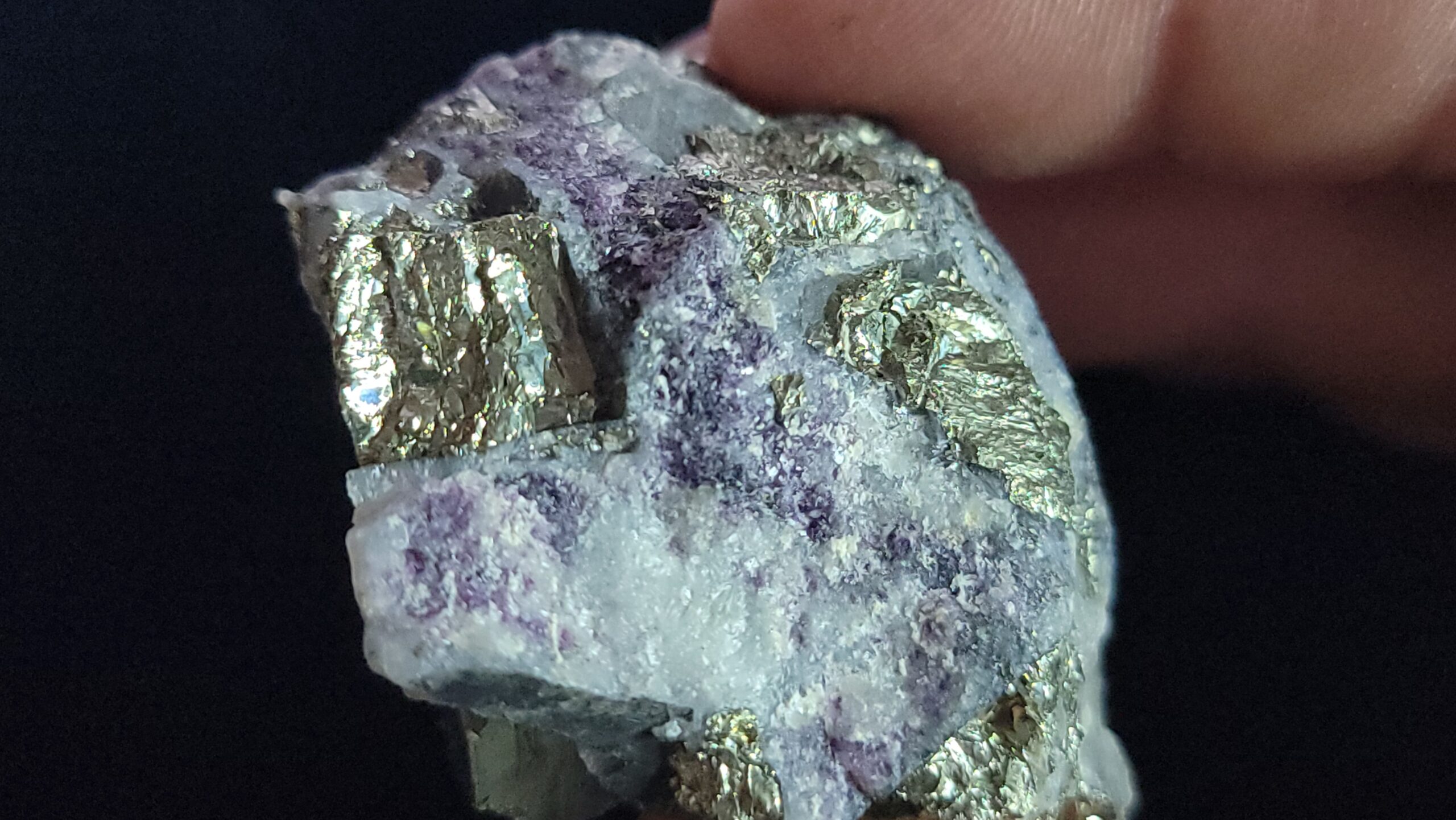

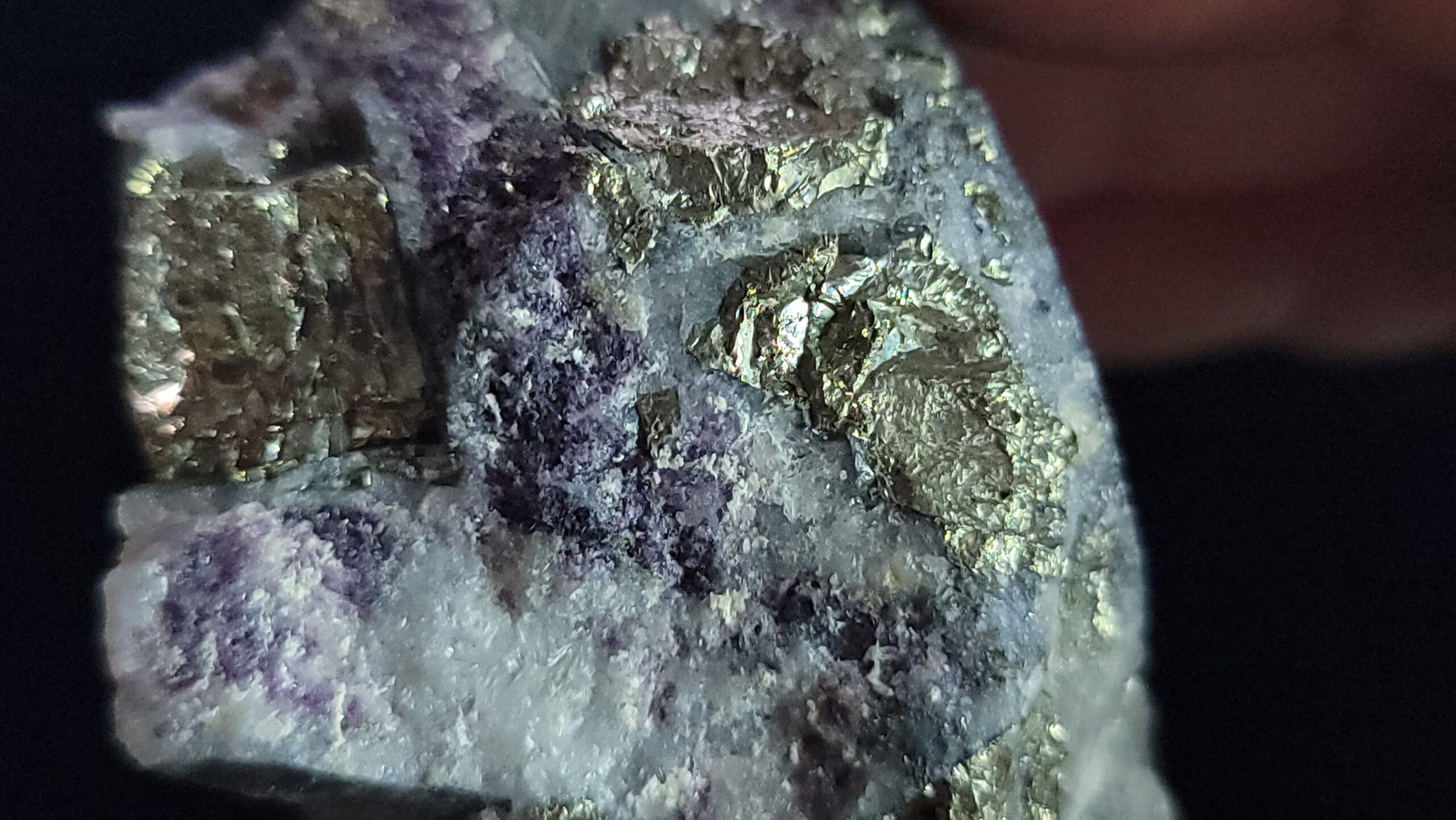


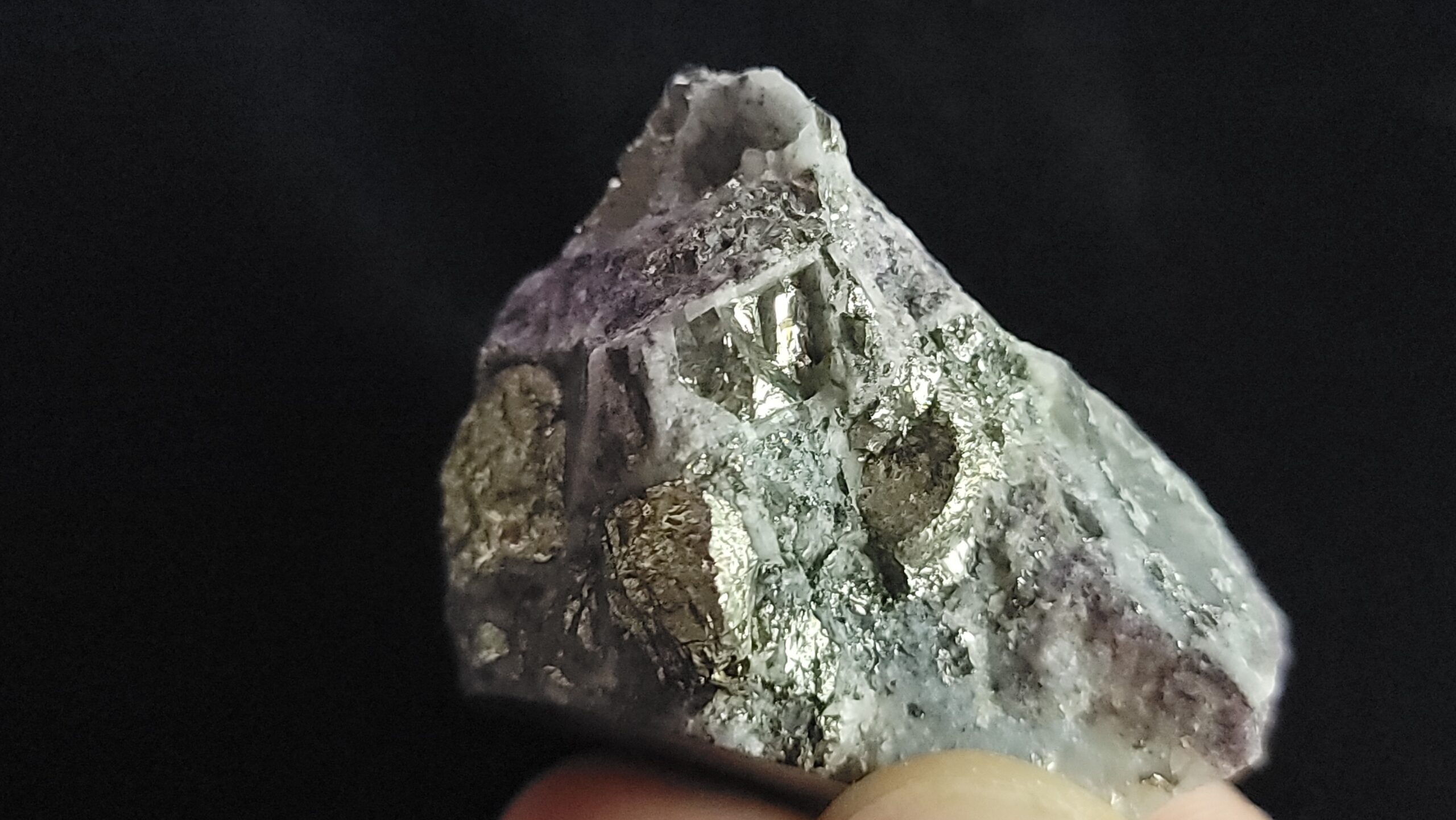

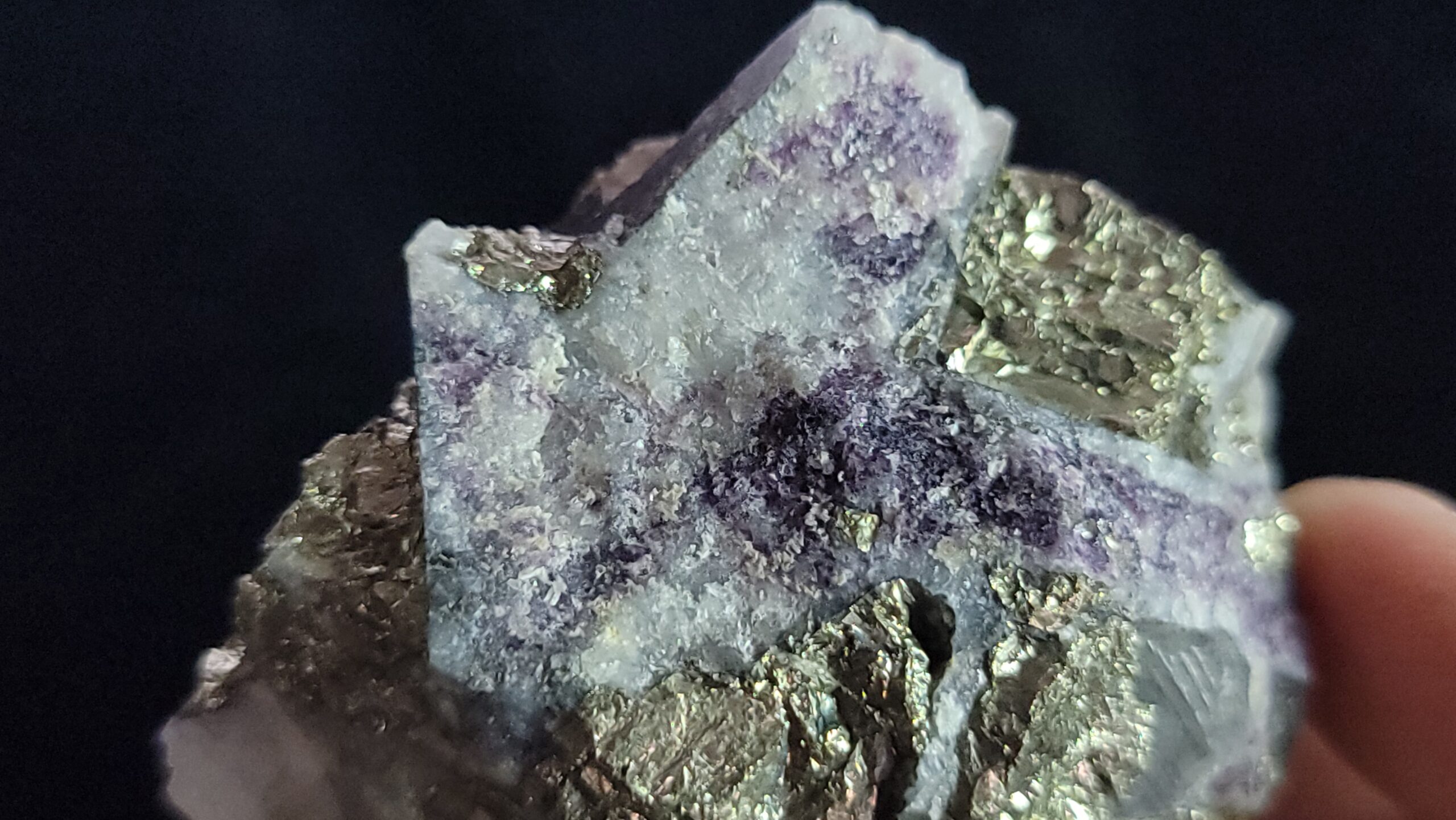
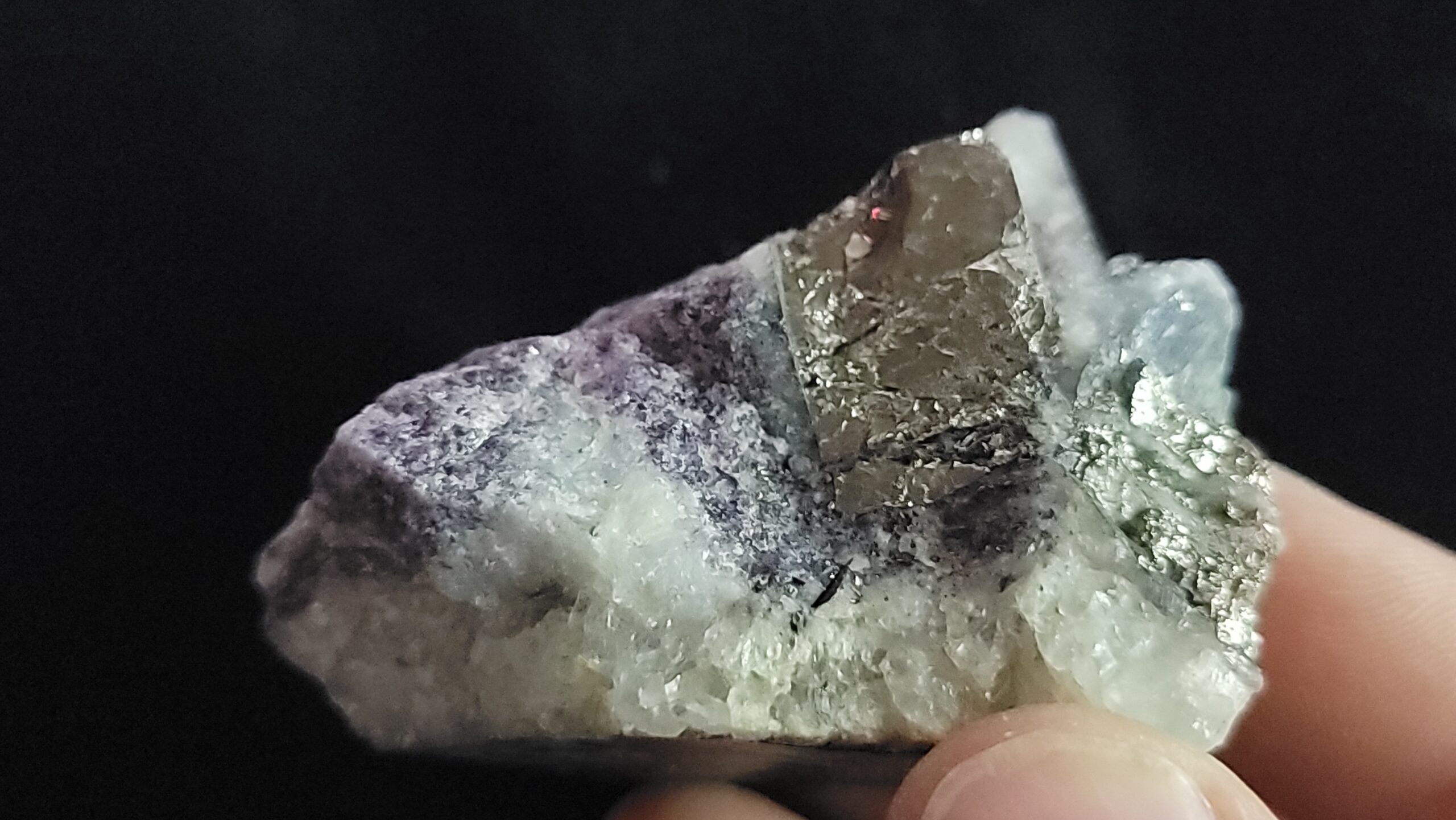
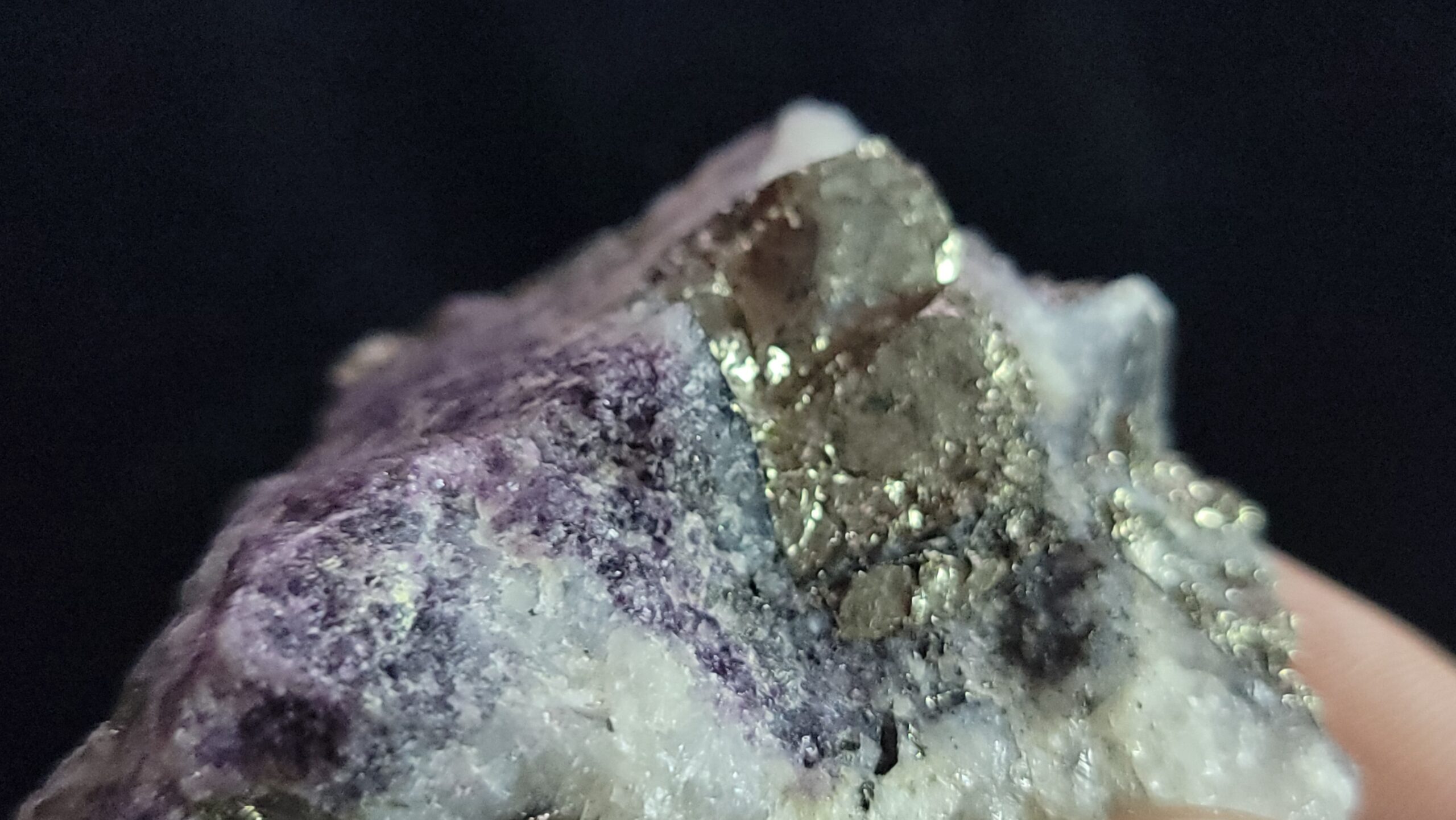




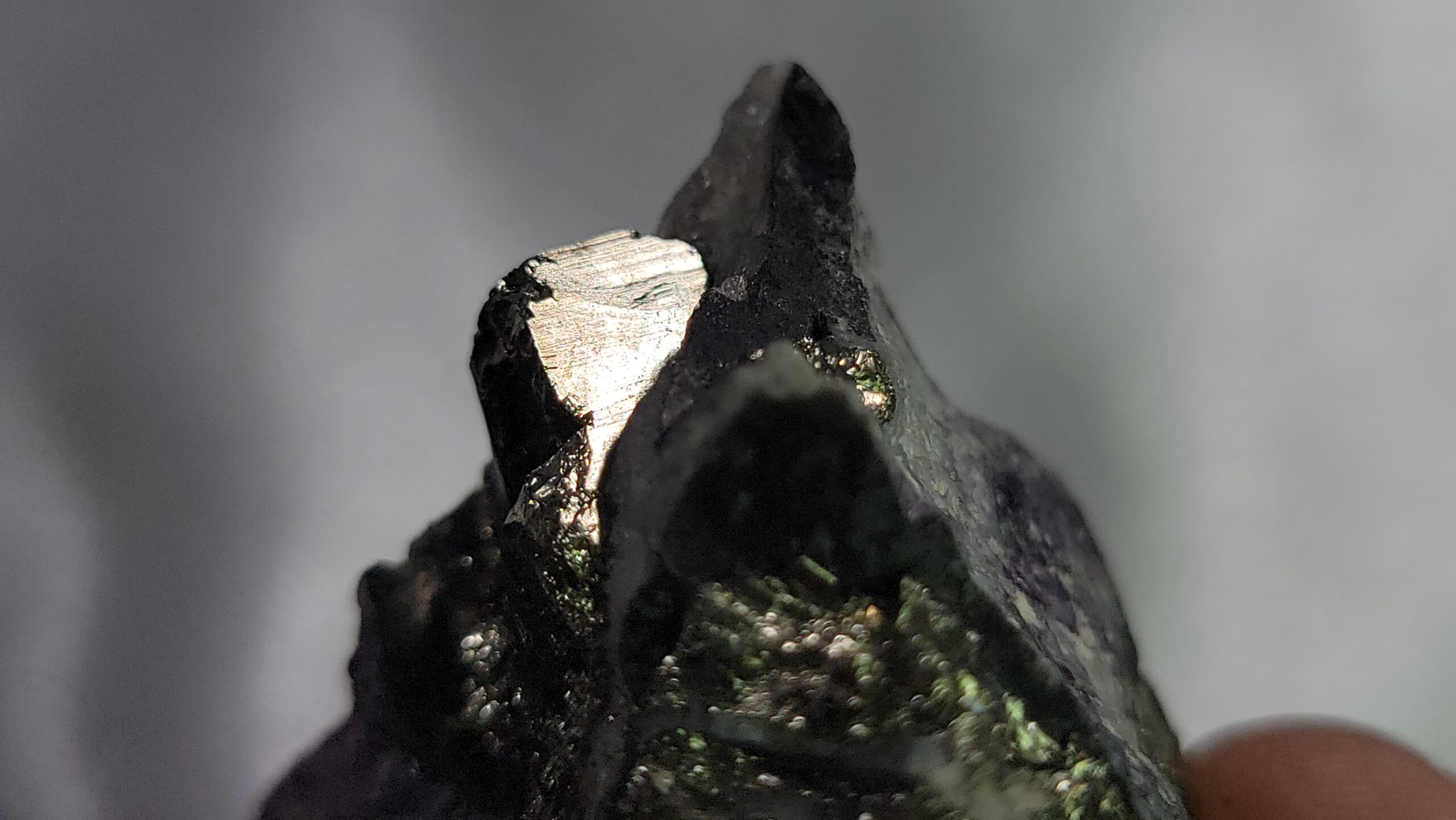
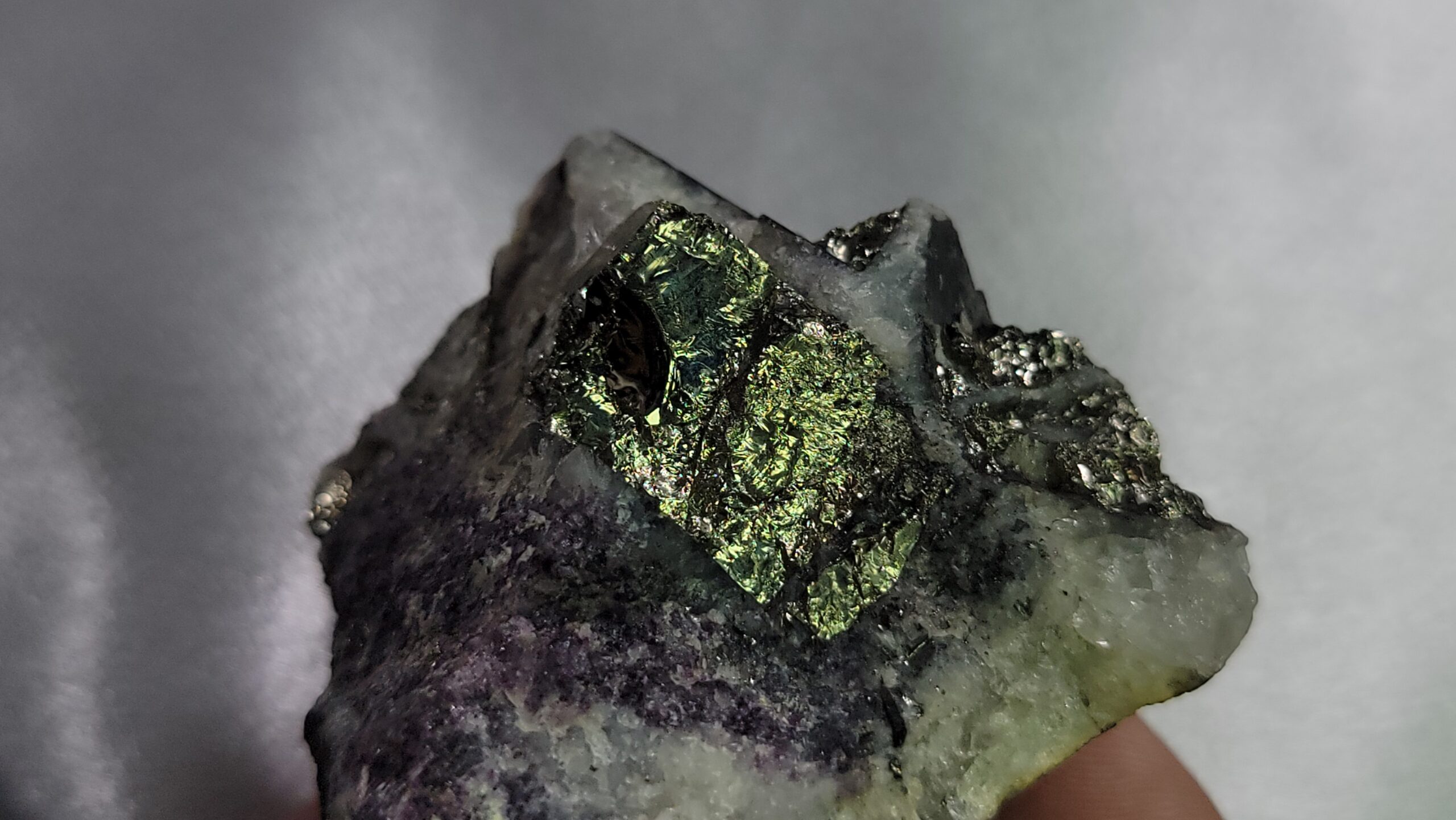








Reviews
There are no reviews yet.